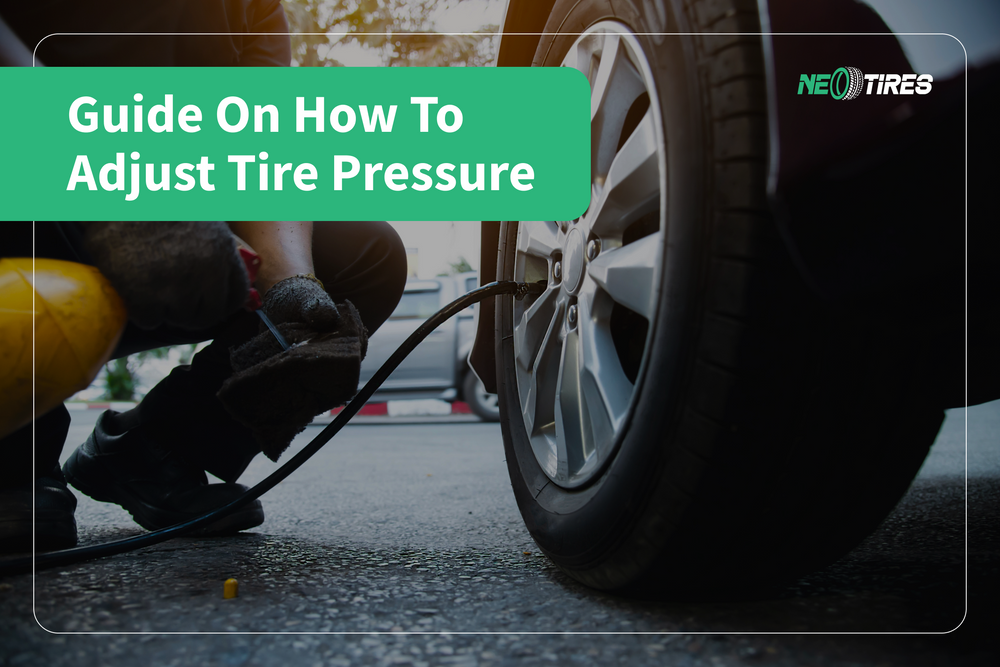When it comes to tires, one of the most important aspects is the pressure in them. Reasonable pressure is the key to a safe and comfortable ride. Also, the longevity of the tire depends directly on how correctly the tire is inflated. Any expert will confirm that too much or too little pressure is just as harmful to your tires as it is to the stability of the car on the road in general.
Luckily, many of us enjoy modern cars equipped with TPMS sensors. For those new here, the TPMS is the computerized program that informs you on the dashboard screen that one of the tires undergoes low pressure. A few years ago, drivers had to estimate the tire pressure only visually. But we are luckier somehow.
Either way, the fact that the TPMS lights up on the dashboard is not enough. Once it does, we must necessarily look for a station where we can adjust the pressure. Otherwise, the under or over-inflated tire begins to undergo a deterioration process, and that's not really what we want, is it? So, how do we adjust the tire pressure by ourselves? The process is not complicated at all, it only takes a few steps.
Know Your Pressure Limit
First of all, you need to know what is the pressure limit for your tires. The recommended pressure differs depending on the type of tire, tire size, and the body of the car. Respectively, each car will have an individual pressure. It would be good to remember this hint because you will need it often. If remembering things is not your strong point, you can find the recommended pressure right on the driver's side door jam.
Tire Gauge Needed
In an ideal scenario, it would be good to keep some helpful tools in the trunk. It is about a set of gloves, a tire gauge, and a compressor or air pressure pump. These will help you in the pressure adjustment process.
Pressure Adjustment Process
Adjusting the tire pressure does not require higher mathematics studies. However, it is highly important to do it correctly, to avoid potential damage to your tires. When you arrive at the gas station or any technical service center, make sure you park the car right next to the air pump. Taking into account that you know the recommended pressure for your tires, set the pump to the required PSI level.
You can start the process with any of the 4 tires. You have to remove the valve stem cap from the tire and connect the air pump to the open hole. Most digital pumps play a specific sound when they have filled the tire to the indicated level. Even without it, you will realize when the pump finishes filling the pressure, as it takes up to 10 seconds. Once the procedure is over, don't forget to put the valve back to avoid air leakage. After you finish with the first tire, repeat the procedure for the other 3 ones.
Do not experiment with pressures that are too high or too low. Fill in the air as recommended by the manufacturer because any deviation leads to higher fuel consumption, in addition to many other adverse effects.
What If the Tire Has a Broken Valve Stem?
In many cases, the tire valve stems can be damaged for various reasons. Unfortunately, we don't really pay much attention to this detail before hitting the road. We realize that the valve is defective only when we come to adjust the tire pressure. How can we proceed in such cases? The problem is a bit more difficult, but it can be solved. Here's what you need to do...
You will need a more equipped technical service center where you can lift up your car. Once you lift it, the tire with the defective valve must be removed. Then, it is necessary to detach the bead of the rim, then remove the damaged valve stem.
After removing the affected valve, all you have to do is put a new one in its place and then inflate the tire to the recommended pressure. Once the problem is solved, all that remains is to mount your tire back on the rim.
Step-By-Step Guide
Now that you know the general process, let's meet each step separately. So, you start the process by unscrewing your valve stem. Make sure you put it in a safe place, preferably in your pocket. Many times, car owners forgot this device somewhere on the side of the road and never found it again. If you do not have a spare valve stem, the tire will undergo air leakage without it.
Now, the next step consists of attaching the air compressor hose to the valve stem. The procedure is very simple. You need to press the pressure gauge into the valve stem. During the process, be sure that the connection is compact to avoid potential air leaks. If you start to hear a specific noise, you will realize that the connection is not compact and the air is leaking. In this case, remove the compressor and try the procedure again.
If you succeed, go on with turning on the compressor. Ensure that the air hose is not ripped or torn. So it must be clean for a correct adjustment.
Use The Tire Gauge
With the help of the tire gauge, check the tire pressure. Adjust it according to the recommended index, in case the gauge indicates an out-of-norm pressure. In case you need more pressure, connect the air line that supplies the tire with additional air. If, alternatively, the pressure is too high, release the air out. To remove excessive air, use the dimple on the gauge rear. With its help, you can control the air depression to the required level.
Once you adjust the pressure as you need, all that remains is to turn off the air compressor and remove the hose. But not before making sure that the pressure level is the one recommended by the manufacturer. Draw your attention for a few seconds if the pressure does not alternate, which would suggest air leaks. If everything is fine, remove the hose after turning off the compressor.
The last step is to repeat the procedure for all the tires. And we don't mean the 4 tires, but the 5. The 5th refers to the spare tire, which I hope you haven't forgotten about, right?
Bottom Line
I hope you have convinced yourself that the process is not complex at all. The first time will be the hardest until you understand the process in practice. Then, it will become a piece of cake. If it still seems difficult, ask a technician for help. After the first attempt, you will adjust the pressure like a pro. With proper pressure, tires will become more fuel-efficient. It is important to never exceed the limits recognized by the manufacturer. Improper tire pressure increases the risk of accidents, tire wear, and poor vehicle performance. For this reason, do not neglect its regular adjustment.
Tire Pressure Adjustment: FAQs
What is The Correct Air Pressure For My Tires?
As a general guideline, the pressure in passenger vehicle tires revolves around 30 to 35 PSI. However, you should make sure about your tire manufacturer's recommendations that you find on the door's jamb or in the driver's manual.
Should Tire Pressure Be Higher At The Back?
Possibly, but not always. Most car makers recommend some extra PSI on the front axle. The additional front pressure helps to compensate for the additional engine load. In most cases, this recommendation concerns front-wheel drive vehicles. On the other hand, some car makers encourage adding some extra pressure on the rear axle especially on RWD vehicles. This helps prevent tire wear. Either way, the wisest thing you can do is to get to know your manufacturer's recommendations. They take into account the type of traction of the vehicle and the specific construction of the tires.
How Can I Fix My Tire Pressure?
We recommend checking the tire pressure at least once a month if your TPMS does not alert you of a potential underinflation. To fix your pressure, you should have a gauge. If the gauge indicates too little air, pump some additional air in short bursts, intermittently checking the level up to the one recommended by the manufacturer. If the gauge indicates too much air, just release some pressure. You can do this by pressing the valve central pin or through your gauge.
Does Tire Pressure Correct Itself?
The air in the tires compresses and expands depending on the degree of heat. If the temperatures drop, your TPMS might alert you about a potential underinflation. Once you turn on the vehicle and drive a few miles, the tires heat up causing the air in them to expand. As a result, the pressure is likely to return to normal, which will correct your TPMS alert. So, yes, tire pressure can correct itself if it's all about temperature variations. If your TPMS doesn't go off even after some mileage, it means that you might have a pressure issue.
Should All 4 Tires Be The Same PSI?
The answer varies depending on the type of traction of the vehicle, the type of tires, and the manufacturer. Some will recommend pumping some extra air into the front tires. Conversely, other manufacturers will encourage adding some PSI more on the rear. To know what pressure your tires should have, you must follow the manufacturer's recommendations, which take into account all aspects of the tires and the specifics of your vehicle.
Why Trust Us?
We want to share some criteria that we are proud of here at Neotires and that would make you trust us. First of all, we are proud of our over 5 years of experience in the market. During this period, we learned to provide high-quality service and products that meet the most complex needs of drivers.
Secondly, any member of the Neotires team has deep knowledge of the tire and automotive industry. This means that we offer professional assistance and service backed up by a qualified background. Thirdly, we collaborate with reliable tire brands to offer reliable products to our customers at reasonable prices.
Last but not least, we just love our job and are crazy about reviewing, comparing, and testing tires to see how well they behave in different conditions. This helps us to create reliable and objective content so that drivers can choose the right products. Reach us for any tire-related needs. We are happy to share our knowledge, expertise, and products so that you can enjoy a safe and performant driving experience. Drive safe and choose your tires wisely!





